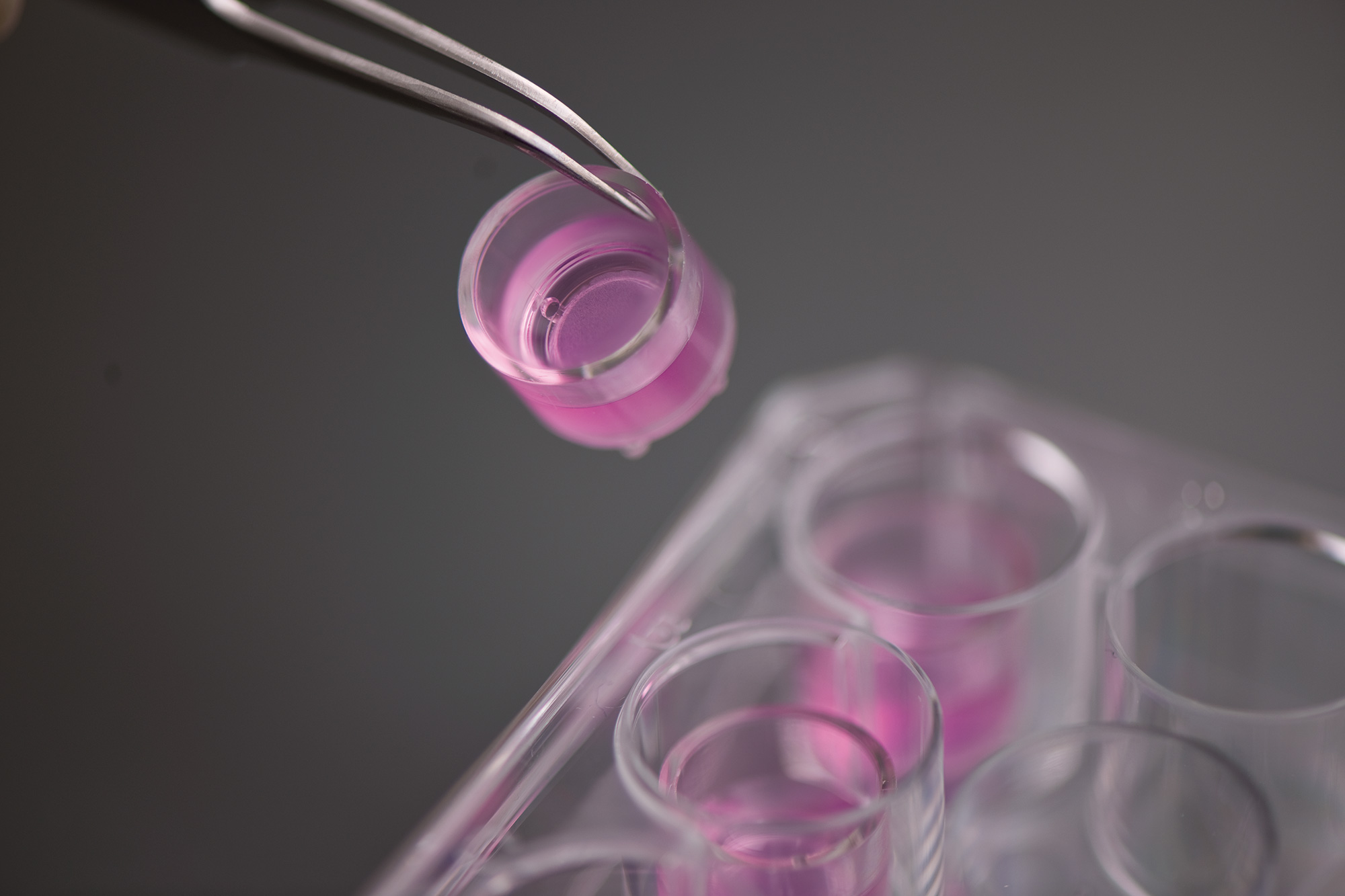New biological materials from the matrix of tissues, bio-inspired structures and biofunctional or biologised surfaces will in future ensure that medical devices, prostheses and implants are better tolerated. With materials that imitate the biochemical and mechanical properties of natural tissue, irritations in the organism can be minimized and a longer durability can be achieved: Ideally, biomimetic biomaterials will be available in the future that can be fully integrated by the body.
Your challenge
They require surfaces and materials for medical devices, prostheses and implants that are well-tolerated in order to minimize irritations in the organism and achieve a longer durability. Or biomaterials that release active ingredients in the body or are completely resorbed.
Our expertise: biological materials and biologised surfaces
We develop materials that can fulfil a specific function in the biological environment. The starting materials are biological molecules or synthetic polymers. In particular, we develop hydrogels as tissue-like matrices or as release systems, biofunctional particles, as well as membranes, fibers and nonwovens for use in medical technology.
Our offer: Chemical syntheses and extraction of biomaterials
We are happy to support your biomaterial development in the conception, with our laboratory expertise, consulting and analytics.
- Modification of biomolecules
- Introduction of crosslinkable functions, masking and anchor molecules
- Extraction from cells and tissues
- Collagen isolation
- recombinant production of extracellular matrix
- tissue-specific clickEC
- Collagen isolation
- Polymer-Synthesis
- Polymers and copolymers with defined functional groups
- Hydrogels
- Polymers and copolymers with defined functional groups
Applications
- Medical devices
- Implant development
- Release of active substances
- Biosensorics
- Tissue engineering
 Fraunhofer Institute for Interfacial Engineering and Biotechnology IGB
Fraunhofer Institute for Interfacial Engineering and Biotechnology IGB